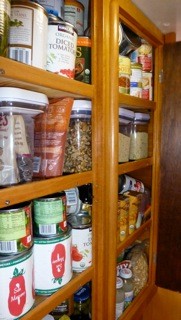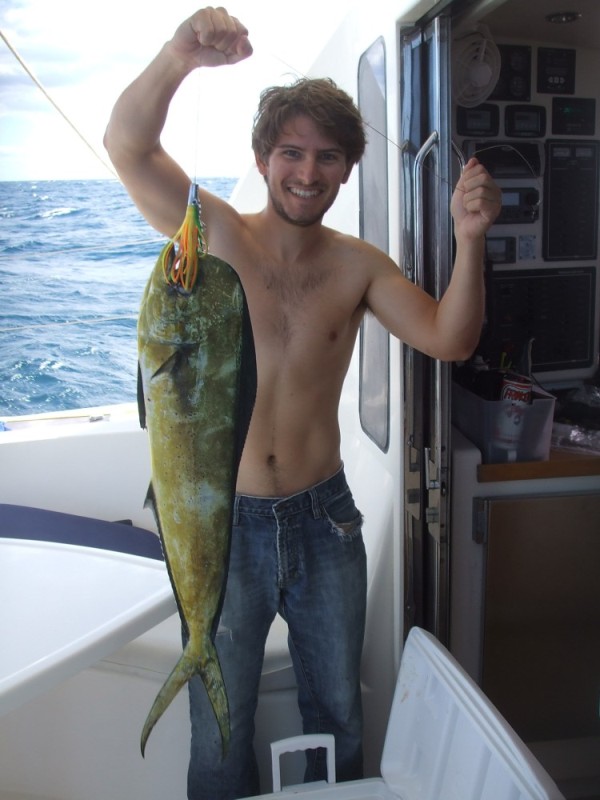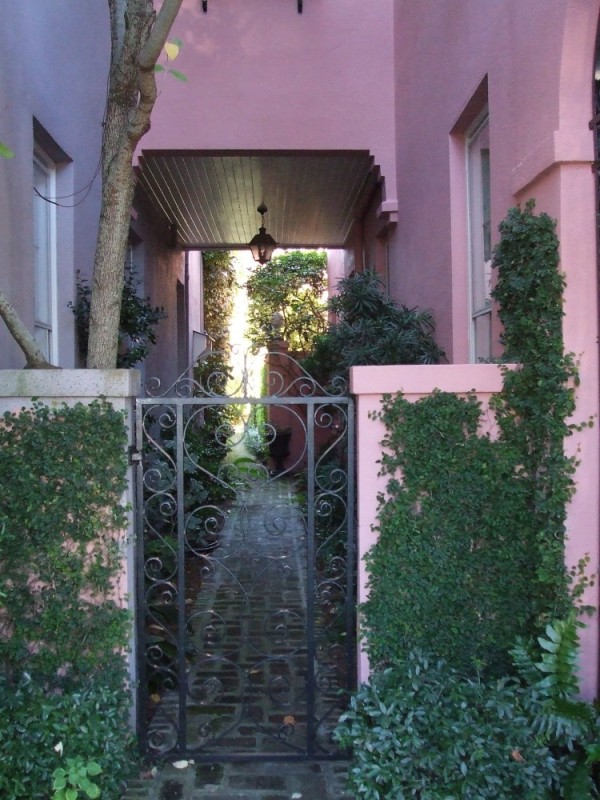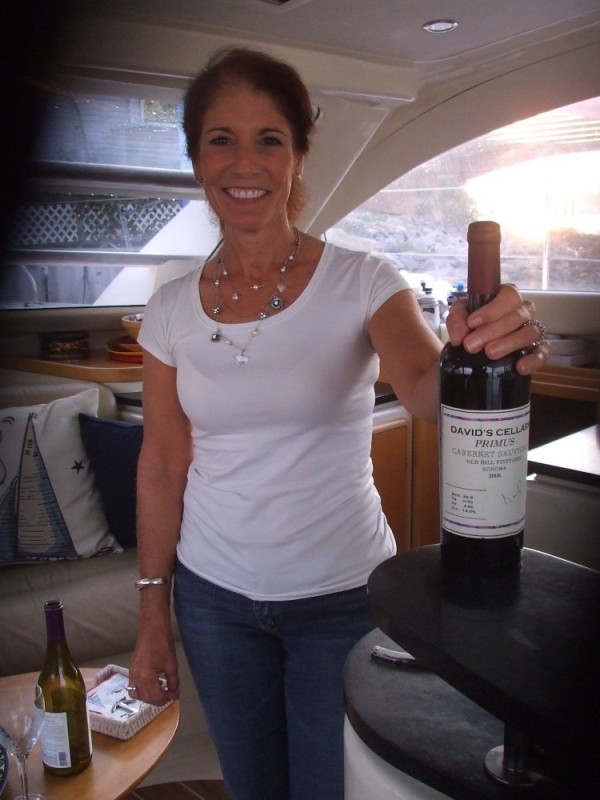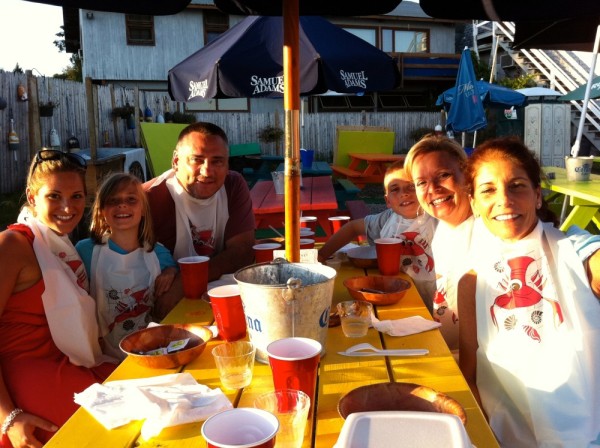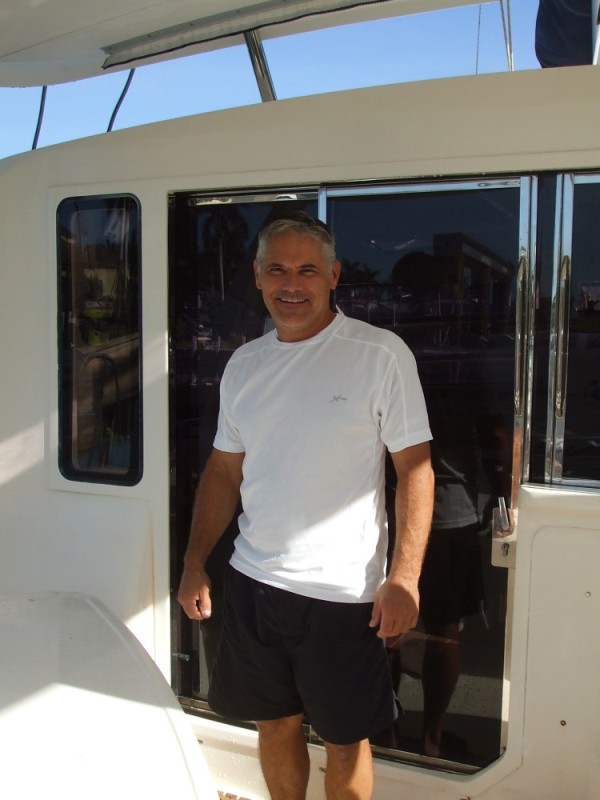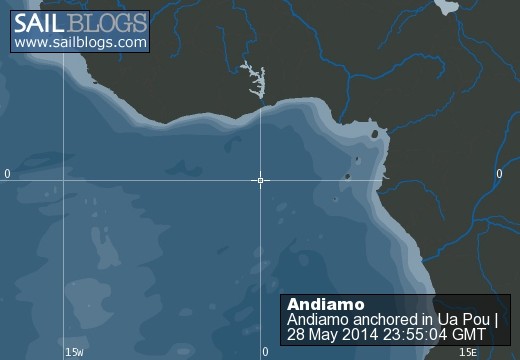
Andiamo Naples
....one woman's take on round-the-world... (well, sort of)
05 January 2015 | finally writing, back in the USA
23 October 2014 | The Islands of Eastern Fiji
12 October 2014 | East of Savusavu, Fiji
30 September 2014 | Savusavu, Fiji
21 September 2014 | Lape Village, Vava'u, The Kingdom of Tonga
14 September 2014 | Neiafu, Vava'u in The Kingdom of Tonga
01 September 2014 | safely in Neiafu, Vavua, Tonga
31 August 2014 | hundreds of miles from anywhere
21 August 2014 | on route to uninhabited Suwarrow atoll
13 August 2014
06 August 2014 | French Polynesia
28 July 2014
10 July 2014
09 July 2014 | Bora Bora, French Polynesia
26 June 2014 | Papeete, Tahiti
17 June 2014 | departing Anse Amyot, Tuamotus
28 May 2014
24 May 2014 | Writing from Tahuata
03 May 2014 | Rikitea, Mangareva
24 April 2014 | En Route to French Polynesia
THE VILLAGE PEOPLE
23 October 2014 | The Islands of Eastern Fiji
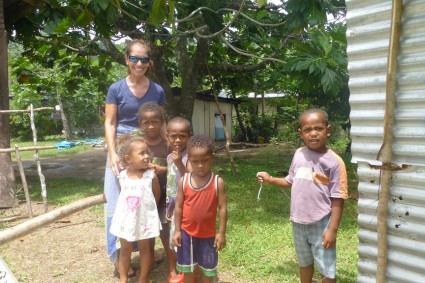
Late in the game, after nearly one year at sea and traveling 11,000 nm, the Fijian concept of land and sea ownership and its ramifications for visiting yachts has added a new - not totally welcomed - dimension to our cruising. While the state ultimately retains ownership of the ocean and its resources, the people of Fiji have been given the tenure and the right to fish for subsistence from all coral reefs - a practice referred to as "iQoliqoli". Consequently, the protocol and custom for yachts cruising iQoliqoli areas is to first visit the village with jurisdiction and present sevusevu asking permission to anchor, use their waters and go ashore. In preparation, back in our port of entry, Savausavu, we bought enough yaqona (kava) to visit nine villages and off we went.
The Village of Qamea: After a false start and no need for sevusevu at Viani Bay (see last blog post), it was not until Qamea that we encountered our first genuine iQoliqoli village. It was finally time to crack out the kava. Learning from our Viani Bay dry run, we dropped anchor and grabbed our yaqona parcel and sulus, but this time we waited until after our wet dinghy landing before slipping them on over our shorts. We asked a young boy we met on the shore to show us to the Turaga ni Koro or headman (aka, the mayor), the gateway, chain-of-command person who would then take us to the chief so that we might present sevusevu. While the unsure lad eyed us up and down in our full-dress outfits, a gentleman named Pedro appeared and informed us that both the headman and chief were still at work. Silly me. I had naively pictured the chief milling around in the village all day doing dignified "chiefly" things, but alas, he works as pool crew at the nearby resort and wouldn't be off until five.....It was not yet three.
Pedro graciously occupied us in the mean time with a stroll through the simple, poor village. Electricity, if available at all, is solar. Water is captured in cisterns; ramshackle outhouses evident. Homes are built on raised stumps and many have linoleum floors but are without furnishings, as seating cross-legged on the floor is customary. We saw well-worn, soiled and mangy bedding outdoors, uncertain whether this was the sleeping arrangement or an attempt to dry/air them out. But the moms with toddlers underfoot were friendly, curious and outgoing, beckoning us with enthusiastic "Bulas!" and peppering us with questions. They were so very impressed and appreciative of our sulus, commenting that yachties may arrive covered-up in long pants, but that we were the first to directly adopt this, their most respectful style of dress. They were tickled that I had on a proper sulu jaba, a step over and above just a wrapped pareo. When the ladies learned that we had sailed from the US, they were particularly incredulous, asking several times of me, "and YOU, my lady, traveled all this way on the yacht?"
Pedro also introduced us to the headmaster for a quick tour just as school was releasing. The vivid blue, clapboard, 120-student primary school has five, age-divided classrooms serving not only the children of this particular village but also those transported via the red panga "schoolboat" from a few adjacent villages. The teachers - responsible for instruction in all subjects in their class - are government sponsored and live (with their families) in private cottages on property. The classrooms are lacking computers and even A/V equipment but the walls are lined with bright and instructive posters and other tutorial aids in math, biology, ecology and health. While villagers young and old speak Fijian among themselves, all classes are conducted in compulsory English. Outside the schoolhouse, rugby rules and the just-dismissed school children rough house on the large, grassy field which fronts the beach. Pedro, seemingly running out of tour talking points, steered us around the kids and proudly walked us to the village's prize mahogany tree.
Our First Sevusevu: It was a few more awkward minutes before the chief arrived, grubby and beat from a hard day's work. We were invited to his modest home, quickly introduced and seated in a circle on the floor. We offered our sevusevu, and with surprisingly little ceremony (silly me, what did I expect, dropping in all unannounced!), the chief and Pedro exchanged what seemed to be a Fijian invocation and we were bid adieu. A few "Bulas!" and "Vinakas" (thank you) later and Pedro explained we were now essentially a vassal of the village and free to use their resources. He then asked, I sensed with a hint of eagerness: "And would we like to drink some kava?" Apparently presenting the seveusevu offering of kava is required, but not necessarily the drinking of it. You bet, already sulued-up, we were all in!
We followed Pedro over to the "community center" - literally nine upright wood poles supporting a flat, corrugated roof over a patch of dirt. Overhead, some suspect wiring was rigged to a lone dangling light bulb. A couple of village ladies spread out a dusty, woven mat over the space and brought Pedro a green laundry tub to serve as a tanoa or mixing bowl, a tea-towel sack and a bilo (a drinking cup formed from a highly polished half-shell of a coconut). We had brought kava root for the chief so we were surprised to see Pedro mixing up a powdered version with some water in the tub and straining it through the stained tea-towel, but we learned we were spared the time necessary to pound the raw root pieces to this fine pulp form.
Seated on Pedro's left, I would be the first to drink. As a nubbie, with Pedro's patience and step-by-step instructions, I asked for a "low-tide" pour, clapped one cobo (a deep, cupped-hand clap), and drank - in a single gulp - from the bilo (drinking from a common cup is said to cement communal bonds). Once emptied the entire group cobos three times. Pedro then turned to David who tried a "mid-tide" pour, while I was noticing the earthy aftertaste and mild tingling in my mouth ...and fearing the anticipated narcotic results. Moving on to the boys (mid-tiders) and finally, Pedro (a brimming high-tide pour), I covertly squirmed, unaccustomed to sitting on the hard ground. After two more rounds like this, Pedro, in a "stoner" way, seemed even more relaxed and buzzed, his laugh even more effervescent. For me, sticking to low-tides, a numb, tingling sensation persisted - like Novocain or original gold Listerine - but I felt no drug effects; apparently years of regular sundowners was proving excellent preparation. I was glad to not be high but was, in all honesty, a bit disappointed to have our first sevusevu be so pedestrian. Silly me - I had pictured sharing our sevusevu with a chief and headman in traditional garb, gathered around in a tribal-looking longhouse with a palm frond roof, and mixing our roots in an elaborate tanoa hand-crafted from a single slab of hard wood like I'd seen in the gift shops in town; Instead, we drank grog from a plastic tub served by a half-lit guy in "jorts" (blue jean shorts). But Pedro was awfully easy and gracious and walked us through what could have been an intimidating ceremony in a strange land. In hindsight, Qamea was a great place for a starter sevusevu.
The Village of Daliconi: We quickly learned that villages have personalities. Finally arriving in the remote out islands of the Lau area, the village of Daliconi had a decidedly different, more reserved, even formal feel relative to light-hearted Qamea. We were required to stop here to present our sevusevu so that we could have access to the Bay Of Islands, acclaimed as "the most beautiful anchorage in the South Pacific". Late afternoon on a Saturday as we suited-up and beach-landed, Samu (the "tourist commissioner") and Biu (wife of Eroni, the headman/mayor) meet us on shore. Again, we found the chief was not in the village - away at an inter-island rugby tournament. Eric offered a grateful Bui the carcass of the mahi-mahi he had just caught entering the pass and we were escorted to meet Eroni, the headman/mayor.
Catching Eroni mid-task, he ushered us over to the longhouse (this one legit, with a thatched roof!) while he finished up his chores. The men of the village were seated on the ground riveted to the The Gold Coast Classic 7's Rugby Tournament viewed via satellite on the village's only TV run on their sole generator. While the mood was upbeat (Fiji was ahead against Poland) the crowd seemed restrained - no sports bar vibe here - so we did not take it too personally when no one tried to engage us in conversation as we sat uncomfortably on the rock hard floor. A half hour later with still no chief in sight, Samu and Eroni on his behalf acknowledged our sevusevu granting us village access, charged us roughly $45 US as a "donation" and invited us back for church the next morning to be followed by a special lunch for the preacher. Feeling a bit cornered, we politely accepted.
Since we arrived ten minutes early for the Sunday service, while the congregation gathered, we were invited to wait separately with the all-male church leaders seated in a circle on the concrete porch (ouch!) next to the chapel. {Fijians are 65% Christian, and as here on Daliconi, mostly Methodist. In fact, the proportion of the population adhering to Methodism is higher than any other nation}. The men, as we expected were dressed in sulus, but we were taken aback by their western-style jackets and ties. Very proper, soft-spoken, somber, reserved folks.
At precisely 10 AM, the churchmen walked over in an organized line, entering the half-filled chapel by the side door to take their seats up front, while we three went through the rear to join the congregation at large. Sitting in overly upright, ergonomically-punitive pews we took in the conventional choir music and subdued tenor of the service if not the message, as it was all in Fijian. The ladies were in their Sunday best, but the white-walled church was so plain that it lacked even a crucifix. I welcomed the familiar and entertaining distraction offered by the full pew of 8 or 10 year old boys - like those the world over - who could not resist fidgeting and carrying on amongst themselves, the very attempt to go unnoticed the essence of their fun. We also appreciated the respect shown to us when introduced as village guests to the congregation; David, as our spokesman, thanked them for including and welcoming us. Seventy yachts have stopped here this year. I wonder how many made it to church.
After the service, with the preacher and churchmen still occupied in a meeting, we waited another hour on the porch of the church hall for lunch to be served. Here we had a bird's eye view of the village ladies carrying in their prepared heavy, covered dishes. {The Sunday Sabbath is strictly observed here as a day of rest... yes, for all but these hard working woman}. While we swatted mosquitoes and managed some strained banter with the school headmaster, we were basically ignored by the rest of the villagers. {Was the cultural divide creating too much discomfort and/or disinterest or were they just a reticent lot?} When lunch finally came, it felt like The Last Supper - me and twelve plus men around a long, narrow table. On the crisp, black and white gingham tablecloth set with matching stoneware plates (such a surprising disconnect from the tattered village) the meal consisted of two main dishes - both stews with fish and greens. We preferred the "cod" (grouper) with "dalo" (taro) leaves in coconut milk enriched broth - quite delicious even if heavily laden with bones. Yet it was quite satisfying to graphically see our contribution to the meal as Eric's mahi carcass, head and all, peered back at us as the basis of the second dish. Watching the men mop up their plates with hunks of dalo and cassava which had been baked in the "lovo" (the underground and only oven), we were sorely missing those French Polynesian baguettes. We chewed slowly, removed the occasional bone, had seconds when offered and, as the village men exchanged minimal, muted conversation, we prayed our churchgoing would nullify any ill effects of the glasses of water before us. After a respectful wait, we made the rounds and said our "Vinakas", while Samu offered us a bag of limes and papayas. Yum. In parting, Eroni suggested we return another day to drink kava. Nice offer, but more than done with decorum and not too keen on another pass at the dishwater stuff, we remained politely noncommittal and finally departed. Now the women could finally clear and eat what food remained.
The Bay of Islands: The weather got glorious and we moved on from Daliconi but stayed in the Bay of Islands for days. This, and the larger Exploring Islands, is a maze of islets we could have endlessly "explored" but that would have meant more villages, more sevusevu, more off-putting, time-consuming awkwardness. After our hard-earned miles to windward to reach the Lau Group, we found ourselves actually limiting our itinerary and abandoning our usual ad hoc cruising behavior simply to avoid the requirement and constraint - as we were now holding it - of sevusevu. Sure we knew of some boats that simply blew off the whole thing, but not only are we pretty by-the-book people, we additionally felt a certain duty to serve as ambassadors, representing both Americans and the larger cruising population in a favorable light. We wanted to "do it right" - kava parcels, proper sulus, gifts for the children, dedicated time ashore. Ultimately, the sevusevu custom was unique among our travels and provided an intimate, albeit somewhat "forced", Lonely Planet glimpse of everyday village life in Fiji. But, at least for us, more villages would not necessarily have enhanced the experience. Perhaps not very PC, but honest..... It was becoming quite clear that we had bought too much kava.
So with village people burnout, we more or less parked ourselves, hiding out in Batavu Harbour - a freehold, plantation area not subject to iQoliqoli. The sun finally shining, no other boats in sight, nothing to do, even a bit dull, but content to take in the natural splendor. We hiked through the working plantation, passing grazing sheep, cows and horses and stopped briefly - as a simple courtesy rather than a necessity - in the caretaker village to offer some gifts (which were rewarded with bananas). Then without delay, we continued up to the crest to the lookout for a breathtaking view down the entire Bay of Islands cluster -" the most beautiful anchorages in the South Pacific". THIS is a cruiser's idea of paradise: A million dollar view with no strings attached.
The Village of Qamea: After a false start and no need for sevusevu at Viani Bay (see last blog post), it was not until Qamea that we encountered our first genuine iQoliqoli village. It was finally time to crack out the kava. Learning from our Viani Bay dry run, we dropped anchor and grabbed our yaqona parcel and sulus, but this time we waited until after our wet dinghy landing before slipping them on over our shorts. We asked a young boy we met on the shore to show us to the Turaga ni Koro or headman (aka, the mayor), the gateway, chain-of-command person who would then take us to the chief so that we might present sevusevu. While the unsure lad eyed us up and down in our full-dress outfits, a gentleman named Pedro appeared and informed us that both the headman and chief were still at work. Silly me. I had naively pictured the chief milling around in the village all day doing dignified "chiefly" things, but alas, he works as pool crew at the nearby resort and wouldn't be off until five.....It was not yet three.
Pedro graciously occupied us in the mean time with a stroll through the simple, poor village. Electricity, if available at all, is solar. Water is captured in cisterns; ramshackle outhouses evident. Homes are built on raised stumps and many have linoleum floors but are without furnishings, as seating cross-legged on the floor is customary. We saw well-worn, soiled and mangy bedding outdoors, uncertain whether this was the sleeping arrangement or an attempt to dry/air them out. But the moms with toddlers underfoot were friendly, curious and outgoing, beckoning us with enthusiastic "Bulas!" and peppering us with questions. They were so very impressed and appreciative of our sulus, commenting that yachties may arrive covered-up in long pants, but that we were the first to directly adopt this, their most respectful style of dress. They were tickled that I had on a proper sulu jaba, a step over and above just a wrapped pareo. When the ladies learned that we had sailed from the US, they were particularly incredulous, asking several times of me, "and YOU, my lady, traveled all this way on the yacht?"
Pedro also introduced us to the headmaster for a quick tour just as school was releasing. The vivid blue, clapboard, 120-student primary school has five, age-divided classrooms serving not only the children of this particular village but also those transported via the red panga "schoolboat" from a few adjacent villages. The teachers - responsible for instruction in all subjects in their class - are government sponsored and live (with their families) in private cottages on property. The classrooms are lacking computers and even A/V equipment but the walls are lined with bright and instructive posters and other tutorial aids in math, biology, ecology and health. While villagers young and old speak Fijian among themselves, all classes are conducted in compulsory English. Outside the schoolhouse, rugby rules and the just-dismissed school children rough house on the large, grassy field which fronts the beach. Pedro, seemingly running out of tour talking points, steered us around the kids and proudly walked us to the village's prize mahogany tree.
Our First Sevusevu: It was a few more awkward minutes before the chief arrived, grubby and beat from a hard day's work. We were invited to his modest home, quickly introduced and seated in a circle on the floor. We offered our sevusevu, and with surprisingly little ceremony (silly me, what did I expect, dropping in all unannounced!), the chief and Pedro exchanged what seemed to be a Fijian invocation and we were bid adieu. A few "Bulas!" and "Vinakas" (thank you) later and Pedro explained we were now essentially a vassal of the village and free to use their resources. He then asked, I sensed with a hint of eagerness: "And would we like to drink some kava?" Apparently presenting the seveusevu offering of kava is required, but not necessarily the drinking of it. You bet, already sulued-up, we were all in!
We followed Pedro over to the "community center" - literally nine upright wood poles supporting a flat, corrugated roof over a patch of dirt. Overhead, some suspect wiring was rigged to a lone dangling light bulb. A couple of village ladies spread out a dusty, woven mat over the space and brought Pedro a green laundry tub to serve as a tanoa or mixing bowl, a tea-towel sack and a bilo (a drinking cup formed from a highly polished half-shell of a coconut). We had brought kava root for the chief so we were surprised to see Pedro mixing up a powdered version with some water in the tub and straining it through the stained tea-towel, but we learned we were spared the time necessary to pound the raw root pieces to this fine pulp form.
Seated on Pedro's left, I would be the first to drink. As a nubbie, with Pedro's patience and step-by-step instructions, I asked for a "low-tide" pour, clapped one cobo (a deep, cupped-hand clap), and drank - in a single gulp - from the bilo (drinking from a common cup is said to cement communal bonds). Once emptied the entire group cobos three times. Pedro then turned to David who tried a "mid-tide" pour, while I was noticing the earthy aftertaste and mild tingling in my mouth ...and fearing the anticipated narcotic results. Moving on to the boys (mid-tiders) and finally, Pedro (a brimming high-tide pour), I covertly squirmed, unaccustomed to sitting on the hard ground. After two more rounds like this, Pedro, in a "stoner" way, seemed even more relaxed and buzzed, his laugh even more effervescent. For me, sticking to low-tides, a numb, tingling sensation persisted - like Novocain or original gold Listerine - but I felt no drug effects; apparently years of regular sundowners was proving excellent preparation. I was glad to not be high but was, in all honesty, a bit disappointed to have our first sevusevu be so pedestrian. Silly me - I had pictured sharing our sevusevu with a chief and headman in traditional garb, gathered around in a tribal-looking longhouse with a palm frond roof, and mixing our roots in an elaborate tanoa hand-crafted from a single slab of hard wood like I'd seen in the gift shops in town; Instead, we drank grog from a plastic tub served by a half-lit guy in "jorts" (blue jean shorts). But Pedro was awfully easy and gracious and walked us through what could have been an intimidating ceremony in a strange land. In hindsight, Qamea was a great place for a starter sevusevu.
The Village of Daliconi: We quickly learned that villages have personalities. Finally arriving in the remote out islands of the Lau area, the village of Daliconi had a decidedly different, more reserved, even formal feel relative to light-hearted Qamea. We were required to stop here to present our sevusevu so that we could have access to the Bay Of Islands, acclaimed as "the most beautiful anchorage in the South Pacific". Late afternoon on a Saturday as we suited-up and beach-landed, Samu (the "tourist commissioner") and Biu (wife of Eroni, the headman/mayor) meet us on shore. Again, we found the chief was not in the village - away at an inter-island rugby tournament. Eric offered a grateful Bui the carcass of the mahi-mahi he had just caught entering the pass and we were escorted to meet Eroni, the headman/mayor.
Catching Eroni mid-task, he ushered us over to the longhouse (this one legit, with a thatched roof!) while he finished up his chores. The men of the village were seated on the ground riveted to the The Gold Coast Classic 7's Rugby Tournament viewed via satellite on the village's only TV run on their sole generator. While the mood was upbeat (Fiji was ahead against Poland) the crowd seemed restrained - no sports bar vibe here - so we did not take it too personally when no one tried to engage us in conversation as we sat uncomfortably on the rock hard floor. A half hour later with still no chief in sight, Samu and Eroni on his behalf acknowledged our sevusevu granting us village access, charged us roughly $45 US as a "donation" and invited us back for church the next morning to be followed by a special lunch for the preacher. Feeling a bit cornered, we politely accepted.
Since we arrived ten minutes early for the Sunday service, while the congregation gathered, we were invited to wait separately with the all-male church leaders seated in a circle on the concrete porch (ouch!) next to the chapel. {Fijians are 65% Christian, and as here on Daliconi, mostly Methodist. In fact, the proportion of the population adhering to Methodism is higher than any other nation}. The men, as we expected were dressed in sulus, but we were taken aback by their western-style jackets and ties. Very proper, soft-spoken, somber, reserved folks.
At precisely 10 AM, the churchmen walked over in an organized line, entering the half-filled chapel by the side door to take their seats up front, while we three went through the rear to join the congregation at large. Sitting in overly upright, ergonomically-punitive pews we took in the conventional choir music and subdued tenor of the service if not the message, as it was all in Fijian. The ladies were in their Sunday best, but the white-walled church was so plain that it lacked even a crucifix. I welcomed the familiar and entertaining distraction offered by the full pew of 8 or 10 year old boys - like those the world over - who could not resist fidgeting and carrying on amongst themselves, the very attempt to go unnoticed the essence of their fun. We also appreciated the respect shown to us when introduced as village guests to the congregation; David, as our spokesman, thanked them for including and welcoming us. Seventy yachts have stopped here this year. I wonder how many made it to church.
After the service, with the preacher and churchmen still occupied in a meeting, we waited another hour on the porch of the church hall for lunch to be served. Here we had a bird's eye view of the village ladies carrying in their prepared heavy, covered dishes. {The Sunday Sabbath is strictly observed here as a day of rest... yes, for all but these hard working woman}. While we swatted mosquitoes and managed some strained banter with the school headmaster, we were basically ignored by the rest of the villagers. {Was the cultural divide creating too much discomfort and/or disinterest or were they just a reticent lot?} When lunch finally came, it felt like The Last Supper - me and twelve plus men around a long, narrow table. On the crisp, black and white gingham tablecloth set with matching stoneware plates (such a surprising disconnect from the tattered village) the meal consisted of two main dishes - both stews with fish and greens. We preferred the "cod" (grouper) with "dalo" (taro) leaves in coconut milk enriched broth - quite delicious even if heavily laden with bones. Yet it was quite satisfying to graphically see our contribution to the meal as Eric's mahi carcass, head and all, peered back at us as the basis of the second dish. Watching the men mop up their plates with hunks of dalo and cassava which had been baked in the "lovo" (the underground and only oven), we were sorely missing those French Polynesian baguettes. We chewed slowly, removed the occasional bone, had seconds when offered and, as the village men exchanged minimal, muted conversation, we prayed our churchgoing would nullify any ill effects of the glasses of water before us. After a respectful wait, we made the rounds and said our "Vinakas", while Samu offered us a bag of limes and papayas. Yum. In parting, Eroni suggested we return another day to drink kava. Nice offer, but more than done with decorum and not too keen on another pass at the dishwater stuff, we remained politely noncommittal and finally departed. Now the women could finally clear and eat what food remained.
The Bay of Islands: The weather got glorious and we moved on from Daliconi but stayed in the Bay of Islands for days. This, and the larger Exploring Islands, is a maze of islets we could have endlessly "explored" but that would have meant more villages, more sevusevu, more off-putting, time-consuming awkwardness. After our hard-earned miles to windward to reach the Lau Group, we found ourselves actually limiting our itinerary and abandoning our usual ad hoc cruising behavior simply to avoid the requirement and constraint - as we were now holding it - of sevusevu. Sure we knew of some boats that simply blew off the whole thing, but not only are we pretty by-the-book people, we additionally felt a certain duty to serve as ambassadors, representing both Americans and the larger cruising population in a favorable light. We wanted to "do it right" - kava parcels, proper sulus, gifts for the children, dedicated time ashore. Ultimately, the sevusevu custom was unique among our travels and provided an intimate, albeit somewhat "forced", Lonely Planet glimpse of everyday village life in Fiji. But, at least for us, more villages would not necessarily have enhanced the experience. Perhaps not very PC, but honest..... It was becoming quite clear that we had bought too much kava.
So with village people burnout, we more or less parked ourselves, hiding out in Batavu Harbour - a freehold, plantation area not subject to iQoliqoli. The sun finally shining, no other boats in sight, nothing to do, even a bit dull, but content to take in the natural splendor. We hiked through the working plantation, passing grazing sheep, cows and horses and stopped briefly - as a simple courtesy rather than a necessity - in the caretaker village to offer some gifts (which were rewarded with bananas). Then without delay, we continued up to the crest to the lookout for a breathtaking view down the entire Bay of Islands cluster -" the most beautiful anchorages in the South Pacific". THIS is a cruiser's idea of paradise: A million dollar view with no strings attached.
Comments
| Vessel Name: | Andiamo |
| Vessel Make/Model: | Leopard 40 Catamaran - Robertson & Caine design |
| Hailing Port: | Naples, FL, USA |
| Crew: | David, Dede & Eric |
| About: | |
| Extra: | "When we stop struggling we float" ... from The Book of Awakening |
| Social: |
Andiamo's Photos - Main
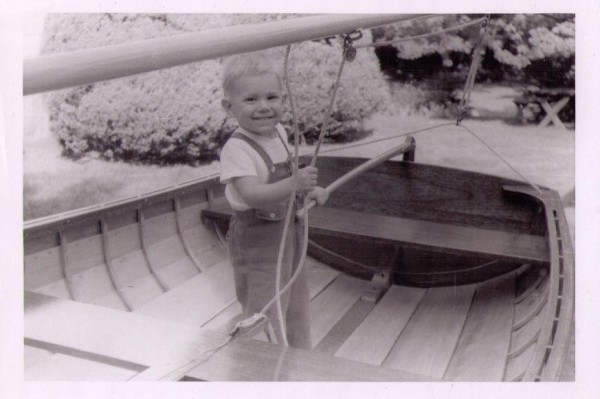 |
Happy 56th Birthday, Captain Dave. Remember these sailing moments?
11 Photos
Created 2 December 2013
|
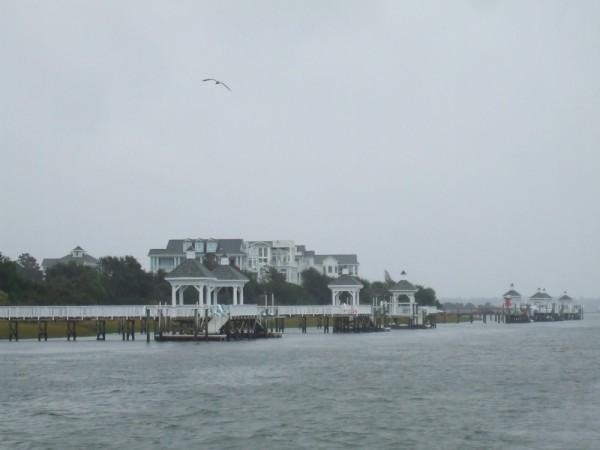 |
In the ICW with stops at Southport, NC and Georgetown, SC, as well as motoring through The Ditch
18 Photos
Created 15 October 2011
|
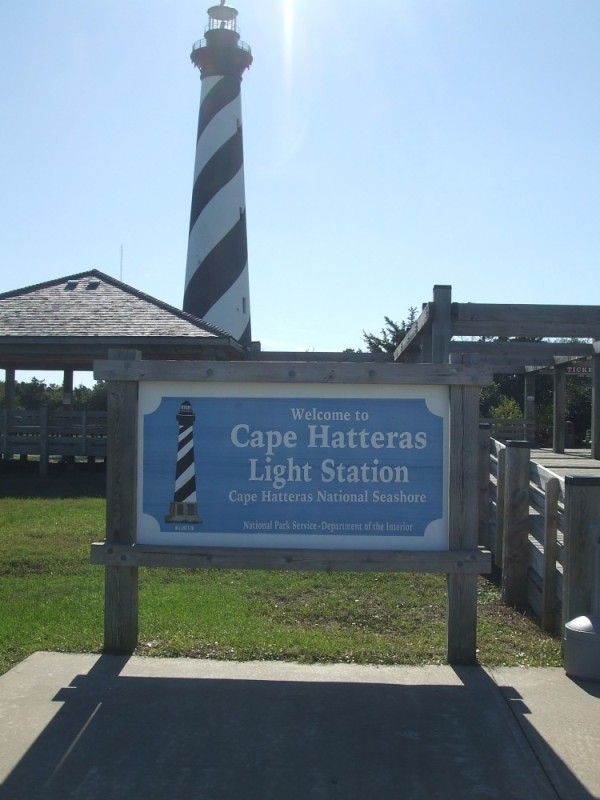 |
Hatteras, Ocracoke, Oriental (ICW) and Cape Lookout, sailing to Wrightsville Beach
33 Photos
Created 9 October 2011
|
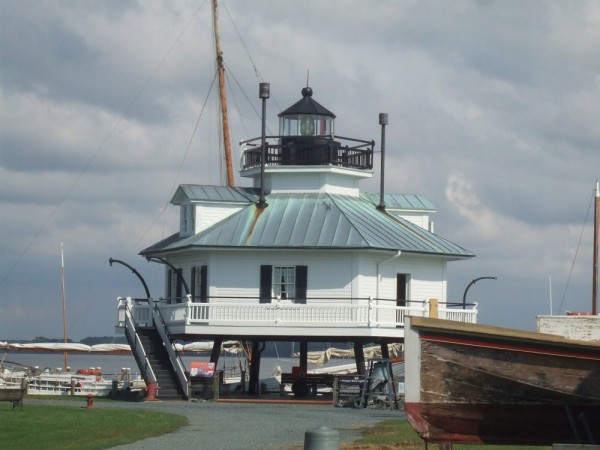 |
New Jersey Coast, Cape May, Annapolis, St. Michaels and Oxford and the southern Chesapeake
43 Photos
Created 30 September 2011
|
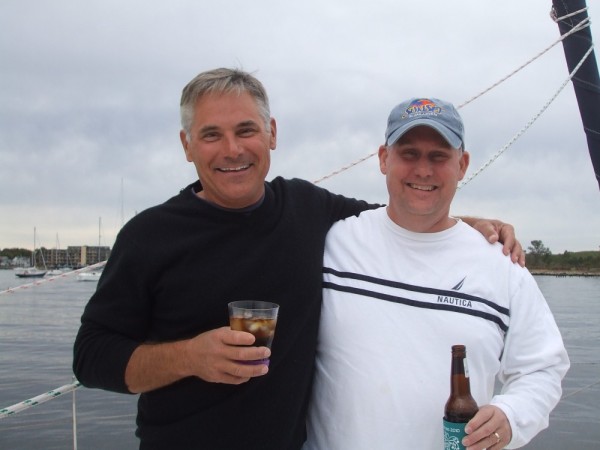 |
Sailing down "memory lane" - Long Island Sound - we visit with Uncle Paul & Aunt Ann and Marty & Linda as we anchor in Black Rock Harbor; then on to NYC
31 Photos
Created 18 September 2011
|
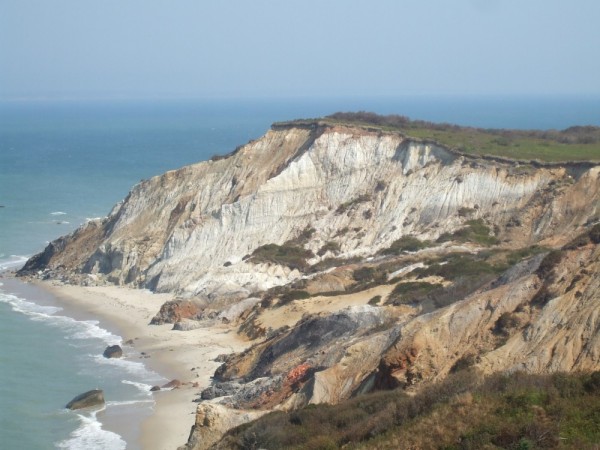 |
What an awesome time cycling around Nantucket and hitting different ports on The Vineyard!
26 Photos
Created 13 September 2011
|
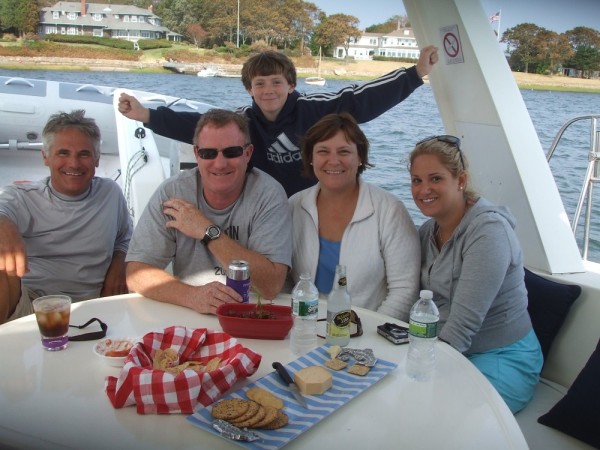 |
Highlights: visit w/ LAURA's family AND celebrating our 30th anniversary at the OCEAN HOUSE
27 Photos
Created 5 September 2011
|
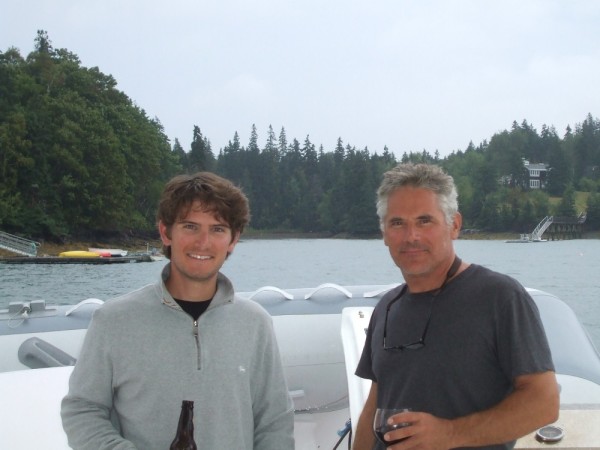 |
After 1998.9 miles, we begin our return home from Bar Harbor. With Katie & Eric still with us we also makes plans for Hurricane Irene
21 Photos
Created 28 August 2011
|
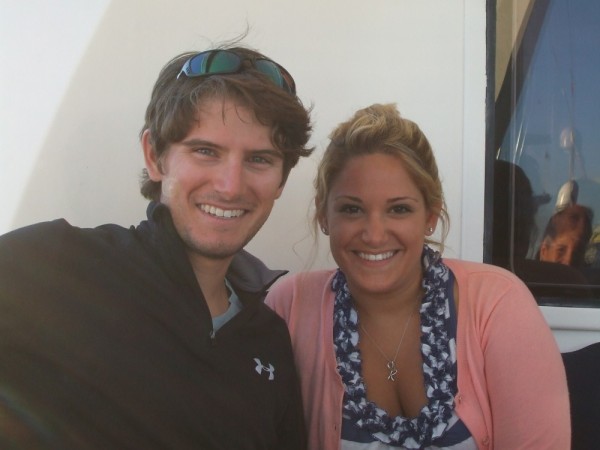 |
Katie & Eric join us to explore our country's second most visited park
34 Photos
Created 23 August 2011
|
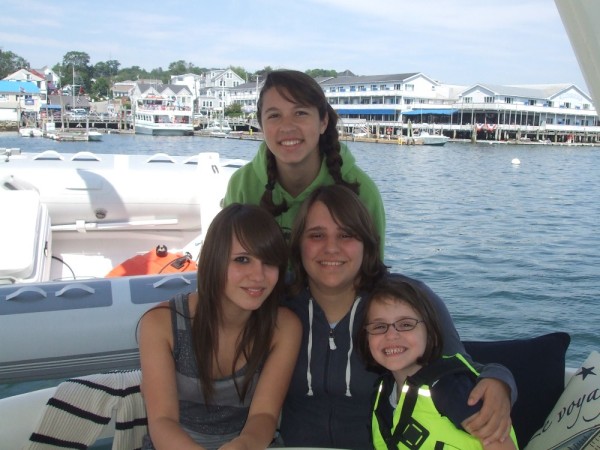 |
Boothbay - Visiting with Cousin Fran & Family; Katie & Eric arrive!
30 Photos
Created 19 August 2011
|
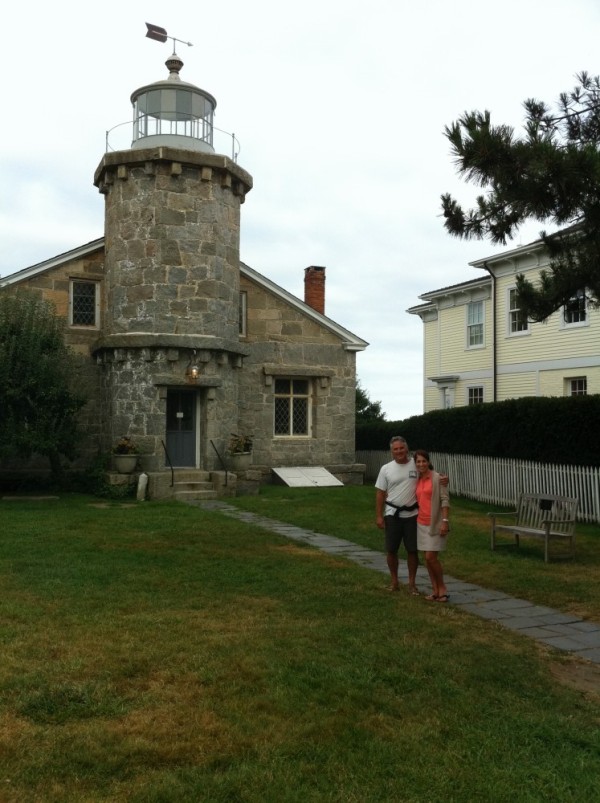 |
Captain Dave and Reluctant First Mate Dede begin THE GREAT SAILING ADVENTURE from Stonington, CT
25 Photos
Created 8 August 2011
|
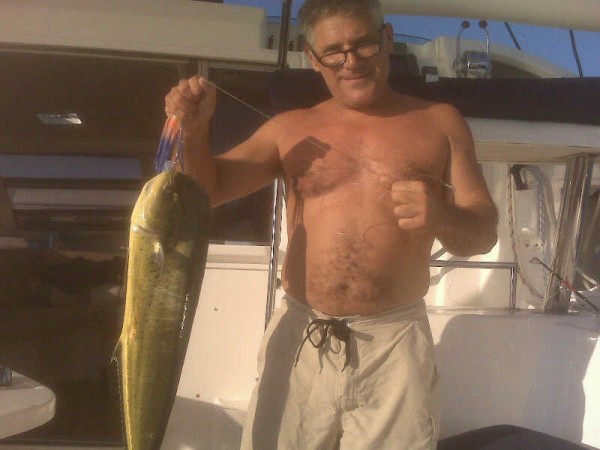 |
Captain Dave and First Mate Mike sail from Virgina Beach to Stonington, CT. Dede Finally shows up!
10 Photos
Created 4 August 2011
|
About Us
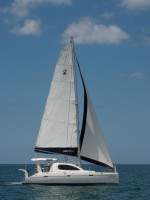
Who: David, Dede & Eric
Port: Naples, FL, USA


